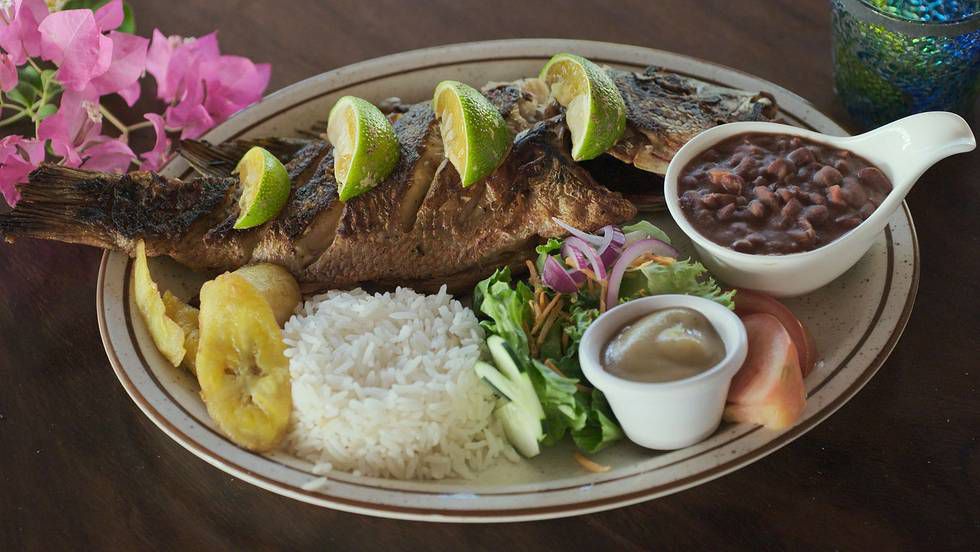Introduction: Costa Rican Cuisine Overview
Costa Rican cuisine is a reflection of the country’s unique geography and history. With influences from indigenous cultures, Spanish colonization, and African heritage, Costa Rican cuisine offers a wide variety of flavors and dishes. Rice, beans, and plantains are staples in many meals, while seafood, chicken, and beef are also commonly consumed. The use of fresh herbs and spices, such as cilantro, cumin, and oregano, adds a distinct flavor profile to Costa Rican dishes.
Vegetarianism and Veganism in Costa Rica
Vegetarianism and veganism are not widely practiced in Costa Rica, with the majority of the population consuming meat as a regular part of their diet. However, there is a growing trend towards plant-based diets and a greater awareness of the environmental and ethical implications of meat consumption. Many restaurants and cafes now offer vegetarian and vegan options, and supermarkets stock a range of plant-based products.
Traditional Costa Rican Dishes and Vegetarianism/Veganism
Some of the most popular traditional Costa Rican dishes, such as gallo pinto (rice and beans) and arroz con pollo (chicken and rice), are not vegetarian or vegan-friendly. However, there are some dishes that can easily be modified to meet dietary restrictions. For example, casado, a traditional lunch dish consisting of rice, beans, plantains, and a choice of meat, can be substituted with grilled vegetables or tofu. Chifrijo, a popular bar snack made with rice, beans, pork, and chicharrones (fried pork rinds), can also be made vegetarian by omitting the pork.
Locally-Grown Produce in Costa Rican Cuisine
Costa Rica is known for its rich agricultural landscape and abundant tropical fruits and vegetables. Locally-grown produce is a key ingredient in many Costa Rican dishes, from the sweet and juicy pineapple used in fruit salads to the hearty root vegetables like yuca and taro used in stews and soups. Some of the most popular fruits include papaya, mango, and guava, while vegetables like squash, corn, and peppers are also widely used.
Plant-Based Protein Sources in Costa Rican Cuisine
While meat is a prominent ingredient in many Costa Rican dishes, there are also a variety of plant-based protein sources available. Beans, particularly black beans, are a staple in many meals and can be used in dishes ranging from soups to salads. Lentils and chickpeas are also popular options. Tofu, tempeh, and seitan are available at many vegetarian and health food stores in urban areas.
Vegan-Friendly Restaurants in Costa Rica
As the demand for plant-based options continues to grow, there are more and more vegan-friendly restaurants popping up all over Costa Rica. In San Jose, the capital city, there are a number of vegan restaurants, including Mantras Veggie Cafe and VeganBurg. Other cities, such as Jaco and Tamarindo, also have vegan-friendly options, such as Green Room Cafe and Falafel Bar.
Vegetarian-Friendly Restaurants in Costa Rica
In addition to vegan options, there are also many vegetarian-friendly restaurants in Costa Rica. Many restaurants offer vegetarian versions of traditional dishes, such as casado and ceviche. Some popular vegetarian-friendly restaurants include Soda Viquez in San Jose and La Ventanita in Manuel Antonio.
Final Thoughts: Costa Rican Cuisine and Vegetarianism/Veganism
While Costa Rican cuisine may not be as vegetarian or vegan-friendly as other cuisines, there are still plenty of options available for those following a plant-based diet. With a focus on fresh, locally-grown produce and a variety of plant-based protein sources, vegetarian and vegan travelers can enjoy the unique flavors of Costa Rican cuisine while still maintaining their dietary preferences.

